 W
WThe Abstract Window Toolkit (AWT) is Java's original platform-dependent windowing, graphics, and user-interface widget toolkit, preceding Swing. The AWT is part of the Java Foundation Classes (JFC) — the standard API for providing a graphical user interface (GUI) for a Java program. AWT is also the GUI toolkit for a number of Java ME profiles. For example, Connected Device Configuration profiles require Java runtimes on mobile telephones to support the Abstract Window Toolkit.
 W
WAllegro is a software library for video game development. The functionality of the library includes support for basic 2D graphics, image manipulation, text output, audio output, MIDI music, input and timers, as well as additional routines for fixed-point and floating-point matrix arithmetic, Unicode strings, file system access, file manipulation, data files, and 3D graphics. The library is written in the C programming language and designed to be used with C, C++, or Objective-C, with bindings available for Python, Lua, Scheme, D, Go, and other languages. Allegro comes with extensive documentation and many examples.
 W
WAqua is the graphical user interface, design language and visual theme of Apple's macOS operating system. It was originally based on the theme of water, with droplet-like components and a liberal use of reflection effects and translucency. Its goal is to "incorporate color, depth, translucence, and complex textures into a visually appealing interface" in macOS applications. At its introduction, Steve Jobs noted that "... it's liquid, one of the design goals was when you saw it you wanted to lick it".
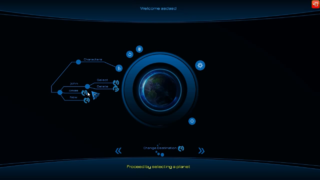 W
WCrazy Eddie's GUI (CEGUI) is a graphical user interface (GUI) library for the programming language C++. It was designed for the needs of video games, but is usable for non-game tasks, such as applications and tools. It is designed for user flexibility in look-and-feel, and to be adaptable to the user's choice in tools and operating systems.
 W
WDialog is an application used in shell scripts which displays text user interface widgets. It uses the curses or ncurses library. The latter provides users with the ability to use a mouse, e.g., in an xterm.
 W
WFast Light Toolkit is a cross-platform widget library for graphical user interfaces (GUIs), developed by Bill Spitzak and others. Made to accommodate 3D graphics programming, it has an interface to OpenGL, but it is also suitable for general GUI programming.
 W
WFLUID is a graphical editor and GUI builder that is used to produce FLTK source code. FLUID edits and saves its state in text .fl files, which can be edited in a text editor for finer control over display and behavior.
 W
WfpGUI, the Free Pascal GUI toolkit, is a cross-platform graphical user interface toolkit developed by Graeme Geldenhuys. fpGUI is open source and free software, licensed under a Modified LGPL license. The toolkit has been implemented using the Free Pascal compiler, meaning it is written in the Object Pascal language.
 W
WFyne is a free and open-source cross-platform widget toolkit for creating graphical user interfaces (GUIs) across desktop and mobile platforms. It is inspired by the principles of Material Design to create applications that look and behave consistently across all platforms. It is licensed under the terms of the 3-clause BSD License, supporting the creation of free and proprietary applications. In December 2019 Fyne became the most popular GUI toolkit for Go, by GitHub star count and in early February 2020 it was trending as #1 project in GitHub trending ranks.
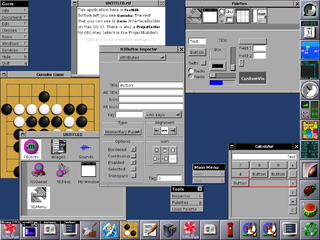 W
WGNUstep is a free software implementation of the Cocoa Objective-C frameworks, widget toolkit, and application development tools for Unix-like operating systems and Microsoft Windows. It is part of the GNU Project.
 W
WGTK is a free and open-source cross-platform widget toolkit for creating graphical user interfaces (GUIs). It is licensed under the terms of the GNU Lesser General Public License, allowing both free and proprietary software to use it. Along with Qt, it is one of the most popular toolkits for the Wayland and X11 windowing systems.
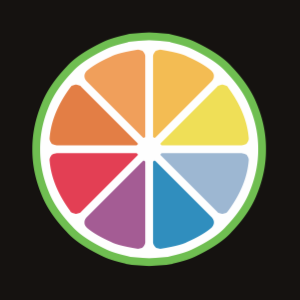 W
WJUCE is a partially open-source cross-platform C++ application framework, used for the development of desktop and mobile applications. JUCE is used in particular for its GUI and plug-ins libraries.
 W
WLessTif is a no longer developed free software reimplementation or clone of the Motif computer programming toolkit, developed by the Hungry Programmers.
 W
WThe Magic User Interface is an object-oriented system by Stefan Stuntz to generate and maintain graphical user interfaces. With the aid of a preferences program, the user of an application has the ability to customize the system according to personal taste.
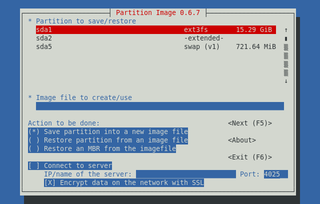 W
WNewt is a programming library for color text mode, widget-based user interfaces. Newt can be used to add stacked windows, entry widgets, checkboxes, radio buttons, labels, plain text fields, scrollbars, etc., to text user interfaces. This package also contains the shared library needed by programs built with newt, as well as an application whiptail, which provides the most commonly used features of dialog. Newt is based on the slang library. It abbreviates from Not Erik's Windowing Toolkit.
 W
WOPEN LOOK is a graphical user interface (GUI) specification for UNIX workstations. It was originally defined in the late 1980s by Sun Microsystems and AT&T Corporation.
 W
WPHP-GTK is a set of language bindings for PHP which allow GTK+ GUI applications to be written in PHP. PHP-GTK provides an object-oriented interface to GTK+ classes and functions. While PHP-GTK partially supports GTK2, GTK3 is not supported at all.
 W
WPyjs, is a rich Internet application framework for developing client-side web and desktop applications in Python. The resulting applications can be run in a web browser or as standalone desktop applications.
 W
WPyQt is a Python binding of the cross-platform GUI toolkit Qt, implemented as a Python plug-in. PyQt is free software developed by the British firm Riverbank Computing. It is available under similar terms to Qt versions older than 4.5; this means a variety of licenses including GNU General Public License (GPL) and commercial license, but not the GNU Lesser General Public License (LGPL). PyQt supports Microsoft Windows as well as various flavours of UNIX, including Linux and MacOS.
 W
WPySide2 is a Python binding of the cross-platform GUI toolkit Qt, currently developed by The Qt Company under the Qt for Python project on porting PySide to work with Qt 5 instead of Qt 4. It is one of the alternatives to the standard library package Tkinter. Like Qt, PySide2 is free software. The project started out using Boost.Python from the Boost C++ libraries for the bindings and later switched to the binding generator Shiboken to reduce the size of the binaries and the memory footprint.
 W
WQt is a free and open-source widget toolkit for creating graphical user interfaces as well as cross-platform applications that run on various software and hardware platforms such as Linux, Windows, macOS, Android or embedded systems with little or no change in the underlying codebase while still being a native application with native capabilities and speed.
 W
WShoes is a GUI toolkit based on the Ruby programming language. It was originally developed by Jonathan Gillette, and others are carrying on with it after his disappearance. Shoes runs on Microsoft Windows, Mac OS X and Linux (GTK+), using the underlying technologies of Cairo and Pango.
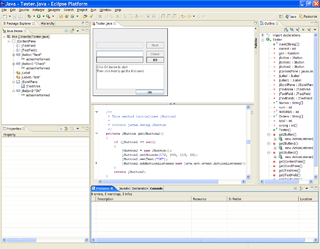 W
WThe Standard Widget Toolkit (SWT) is a graphical widget toolkit for use with the Java platform. It was originally developed by Stephen Northover at IBM and is now maintained by the Eclipse Foundation in tandem with the Eclipse IDE. It is an alternative to the Abstract Window Toolkit (AWT) and Swing Java graphical user interface (GUI) toolkits provided by Sun Microsystems as part of the Java Platform, Standard Edition (J2SE).
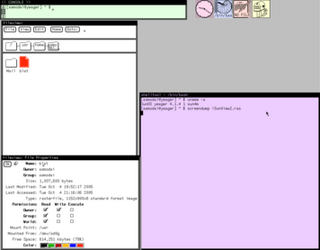 W
WSunView was a windowing system from Sun Microsystems developed in the early 1980s. It was included as part of SunOS, Sun's UNIX implementation; unlike later UNIX windowing systems, much of it was implemented in the system kernel. SunView ran on Sun's desktop and deskside workstations, providing an interactive graphical environment for technical computing, document publishing, medical, and other applications of the 1980s, on high resolution monochrome, greyscale and color displays.
 W
WSwing is a GUI widget toolkit for Java. It is part of Oracle's Java Foundation Classes (JFC) – an API for providing a graphical user interface (GUI) for Java programs.
 W
WTk is a free and open-source, cross-platform widget toolkit that provides a library of basic elements of GUI widgets for building a graphical user interface (GUI) in many programming languages.
 W
WWidgetsets support platform-sensitive development with the Lazarus IDE system. They act as adapter libraries that provide an interface between a platform-inpedentent sourcecode written in Free Pascal and platform-specific system functions. Thus they allow for development of platform-native software without requiring to provide specific source code for different target platforms.
 W
WWindows Forms (WinForms) is a free and open-source graphical (GUI) class library included as a part of Microsoft .NET Framework or Mono Framework, providing a platform to write rich client applications for desktop, laptop, and tablet PCs. While it is seen as a replacement for the earlier and more complex C++ based Microsoft Foundation Class Library, it does not offer a comparable paradigm and only acts as a platform for the user interface tier in a multi-tier solution.
 W
WwxPython is a wrapper for the cross-platform GUI API wxWidgets for the Python programming language. It is one of the alternatives to Tkinter. It is implemented as a Python extension module.
 W
WwxWidgets is a widget toolkit and tools library for creating graphical user interfaces (GUIs) for cross-platform applications. wxWidgets enables a program's GUI code to compile and run on several computer platforms with minimal or no code changes. A wide choice of compilers and other tools to use with wxWidgets facilitates development of sophisticated applications. wxWidgets supports a comprehensive range of popular operating systems and graphical libraries, both proprietary and free, and is widely deployed in prominent organizations.
 W
WX Athena Widgets or Xaw is a GUI widget library for the X Window System. Developed as part of Project Athena, Xaw was written under the auspices of the MIT X Consortium as a sample widget set built on X Toolkit Intrinsics (Xt); Xt and Xaw are collectively known as the X Toolkit. Xaw has been largely superseded by more sophisticated toolkits like Motif, GTK+, and Qt but it is still maintained and is available as part of most X Window System installations. The library, like other core parts of X, is licensed under the MIT License.
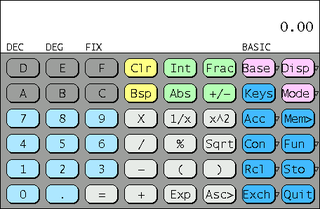 W
WXView is a widget toolkit from Sun Microsystems introduced in 1988. It provides an OPEN LOOK user interface for X Window System applications, with an object-oriented application programming interface (API) for the C programming language. Its interface, controls, and layouts are very close to that of the earlier SunView window system, making it easy to convert existing applications from SunView to X. Sun also produced the User Interface Toolkit (UIT), a C++ API to XView.
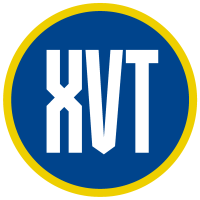 W
WXVT is a software development environment for building cross-platform GUI applications in C or C++. XVT allows developers to graphically lay out an application's GUI, and provides cross-platform libraries to aid development.